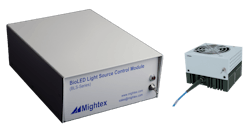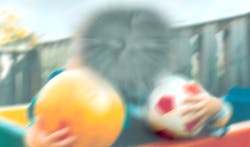A combination of optics and genetics, optogenetics controls neurons in living—even freely moving—animals. Briefly, optogenetics uses genes to make neurons respond to light, switching on and off by way of light-stimulated proteins placed in specific populations of neurons.
The technique involves a range of tools that enable control of the neurons. For light stimulation, researchers can use lasers, such as those made by Laserglow Technologies (Toronto, ON, Canada), or light-emitting diodes (LEDs), such as those from Mightex Systems (Toronto, ON, Canada) and Prizmatix (Givat Shmuel, Israel). To link this technology to animal behavior, Biobserve (St. Augustin, Germany) makes a system that tracks and analyzes movements.
The technology has already enabled some interesting discoveries in neuroscience, but it is producing applications beyond the lab, too. For instance, RetroSense Therapeutics (Ann Arbor, MI) is working on optogenetics-based treatment for retinal diseases such as macular degeneration.
This article will explore this entire range of optogenetics tools and applications.
Behavioral tracking
Some optogenetic experiments involve moving animals, and Biobserve's Viewer3 can track a moving mouse. According to Dr. rer. nat. Christian Gutzen, founder of Biobserve, "We provide video tracking solutions to automatically analyze the behavior of an animal in an experimental arena." This area can be open or a maze. Gutzen adds, "So 30 times a second we detect the animal in the video and measure its position and orientation in the arena. Based on these measurements, we calculate a lot of parameters—such as distance traveled, activity, visits of certain areas—and behaviors shown by the animal."
This system can also connect to external hardware. For example, Gutzen says, "The video tracking software can control third-party hardware based on the position and/or the behavior of the animal. So after a certain time in the experiment, or when the animal visits a certain predefined zone, the software triggers a TTL [transistor-transistor logic] outbreak box or an interface card that generates laser pulses to activate the appropriate brain region." In this way, an animal's behavior can turn on an optogenetic system.
Researchers can quickly develop experimental protocols with this system. "Setting up the behavioral experiment is quite simple, as the software provides a graphical user interface and a comfortable script language to program the experiments," Gutzen says.
Sources of light
The light needed in optogenetics depends on the experimental approach. In general, researchers want to illuminate smaller numbers of neurons in an animal's brain or larger groups of cells, sometimes under a microscope. For larger exposed areas, the light source can be less precise. Illuminating a small number of neurons in the brain, says Justin Hosaki, vice president of sales and operations at Laserglow Technologies, requires a low-noise laser. "The output must be precise," he says.
In coarser applications of the light, power fluctuations of the laser over micro- or milliseconds might not matter. "If you are looking at events on a very short timescale, then you need to make sure that the laser is stable on that timescale, or you will get widely varying responses," Hosaki says.
Most users want a variety of laser wavelengths—say, one to excite cells and one to inhibit them. So Laserglow makes products that include two lasers. "Both beams are in a single fiber-optic cable," says Hosaki. "This makes it simpler for users."
LEDs can also be used in optogenetics projects. "They are more readily available in different colors than laser diodes," says Miles Li, Ph.D., cofounder and managing director at Mightex Systems, "and the cost is much lower."
He points out other benefits of LEDs, including ease of use, plus the ability to easily adjust their intensity and modulate them at high frequencies. Historically, LEDs suffered from low power in this application, but that is changing (see Fig. 1). "The power of LEDs has more than quadrupled in the past five years," Li says. The Mightex Polygon400 Dynamic Spatial Illuminators, for instance, offer a range of benefits in optogenetics, including programmable multi-wavelength patterned illumination.
Like lasers, the right LED system depends on the application. "Prizmatix's full-featured Optogenetics Toolbox targets both in vitro and in vivo applications, enabling easy expansion of wavelengths and use in both microscope and thin-fiber delivery setups," says Nathaniel Sperka of Prizmatix. "Prizmatix's Optogenetics-LED provides a very economical light source, enabling bilateral activation of multiple free moving animals by same light source." (See Fig. 2.)Scientists will also keep finding new applications for optogenetics. As an example, Harry Asada, Ford Professor of Engineering at the Massachusetts Institute of Technology (MIT) in Boston, hopes that optogenetics can control muscles in biological machines.
Moving into medicine
Clinical applications of optogenetics offer great promise, and macular degeneration (MD) provides a powerful example. In MD, retinal damage reduces—or eliminates—the central field of vision. According to data from the National Eye Institute, age-related MD increased by almost 20 percent in the United States during the 2000-2010 period. Researchers at RetroSense Therapeutics hope to treat this and similar conditions with optogenetics (see Fig. 3).This company delivers the gene for channelrhodopsin-2 (ChR2) to the retina's ganglion layer. The ganglion cells connect the retina to the optic nerve, which takes visual information to the optic cortex in the brain. "Stimulation of ganglion cells is a means of vision restoration in humans," says Sean Ainsworth, CEO at RetroSense Therapeutics. In brief, this approach bypasses the damaged retina.
Ainsworth and his colleagues hope to begin clinical testing in 2014. So far, preclinical testing looks promising. "We're sure we can impart some vision with the naked eye," Ainsworth says. In combination with glasses tuned to light that activates ChR2, patients could see even better. The dream scenario, however, would be improving vision to the point of reading newspaper headlines. "To someone who cannot walk down a sidewalk without a cane, that will have a tremendous impact on their life," Ainsworth points out.
More than likely, we are only seeing the beginning of what optogenetics will light up.


